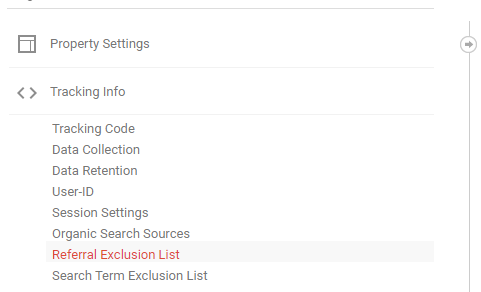Prep Your Analytics for a Domain Migration
When migrating your site to a new domain, adding a new subdomain, or adding redirects to your site, there can be various implications on your SEO rankings and page authority.
Additionally, If you use Google Analytics, Google Tag Manager, and other tools to analyze your data with, it’s likely that your site’s domain is involved in the configuration of your analytics tools. When switching to a new domain, it’s important to ensure that your tracking won’t be impacted, and that everything will remain consistent and accurate during the migration process.

It’s important to take a proactive approach to this process, as you’ll want as much time as possible to prep your assets for the migration.
Below are some Analytics-related items you’ll want to consider auditing when going through a domain change.
Google Analytics Configuration
Multiple aspects of your Google Analytics account involves setting a hostname or domain. You’ll want to ensure that the following items in Google Analytics reflect your new site domain:
View Filters
Ensure that any filters utilizing hostnames are checked and updated when necessary. One common example is any filter to include certain hostnames and exclude others.

Referral Exclusion List
For most use cases, your domain should be added to the Referral Exclusion List to prevent self-referrals from inflating your data.
When updating your domain, it’s important to ensure that your new domain is reflected on the Referral Exclusion List. This setting can be found under Property Settings > Tracking Info > Referral Exclusion List.

Property & View Settings
There are multiple settings in your Property and View Settings that require you to input your site hostname. When migrating your domain, you should ensure that all of these URL based settings are properly updated.

URL Based Goals
If you use destination-based goals, it’s possible that changing your domain may impact them and cause your configuration to break. To avoid goal flatlines, you should ensure that the destination URLs are updated to reflect your new hostname.
At Seer, we highly recommend making changes like these in a test view before rolling out to your main reporting view.

Important Note: Do you have a prepend hostname filter set-up? Note that changing your domain will likely cause data to splinter in your Google Analytics report.
For example, if I changed my domain from winter-schweibold.com to winterschweibold.com, my homepage would report in GA as winter-schweibold.com/home before the migration, and winterschweibold.com/home post-migration.
When I want to look at a year-over-year comparison of how my homepage performed, this will take some extra work in order to accurately analyze page performance.
Annotate your Google Analytics views any time your site goes through a change like a domain migration. Annotations can be added under Admin > View > Annotations.
Google Tag Manager Implementation
Multiple aspects of your Google Tag Manager account involves setting a hostname or domain, such as a page-based trigger or any trigger that contains a hostname or page URL exception. You’ll want to ensure that the following items in Google Tag Manager containers reflect your new site domain:
Hostname and/or Page Triggers
It’s a common practice to use page URLs as parameters in your GTM tags. When changing over your domain, it’s important that you prep your current tracking to be prepared for the change.
We recommend identifying all tags and triggers that have a URL as part of the tracking logic, and ensure that it gets updates prior to your migration.
Export everything in your container into an Google Sheet and easily identify which tags, triggers, or variables need to be updated with your new domain.
Cross-Domain Tracking
If you utilize the built-in cross-domain tracking feature in GTM, ensure the domains included in this implementation are updated to reflect your new domain.

GTM Variables
When changing your hostname, it’s important that you double check your GTM variables as well. Variables such as your GA Settings Variable and Look-Up Tables potentially can contain parameters based on your domain.
For example, if your GA Settings utilizes a look-up table to send traffic from specific domains to different GA properties, you’ll want to ensure that’s updated.

Other Tools
Outside of Google Analytics & Google Tag Manager, there are many other tools that may be impacted by your domain migration. Staying in the realm of Google products, you should ensure that the following tools are updated to reflect your new domain:

Google Data Studio
Check if any charts within your Data Studio dashboards include a hostname filter, and update accordingly. It would also be beneficial to annotate your reports, so you can easily monitor if your domain migration had any effect on performance.
 BigQuery
BigQuery
Ensure that any pre-built queries in BigQuery that might be dependent on hostname are updated to reflect your new domain.
Did I miss anything? Leave a comment below if you’ve recently gone through a similar process with migrating your site’s domain!


